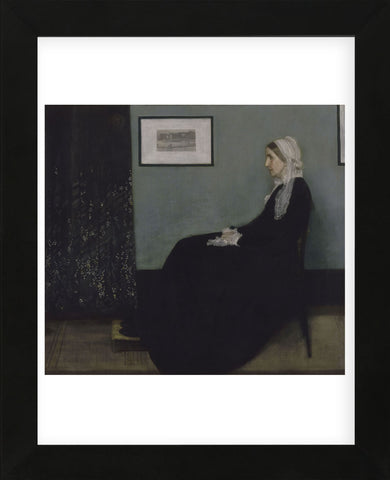Product Detail
- Overall: 16" H x 13" W x 0.75" D
- Overall Product Weight: 2.5lb.
- Material: Glass
- High-quality print on heavy paper
- Printed with vibrant, color-fast inks
- Framed in a contemporary style molding; available in black, gold, and white
- Sawtooth hanger
- Unmatted
Image is Copyrighted and Property of its respective owner
Product Detail
- Overall: 16" H x 13" W x 0.75" D
- Overall Product Weight: 2.5lb.
- Material: Glass
- High quality print on heavy paper
- Printed with vibrant, color-fast inks
- Framed in a contemporary style molding; available in black, gold, and white
- Sawtooth hanger
- Unmatted
About the Artist
James Abbott McNeill Whistler (born July 11, 1834, Lowell, Mass., U.S. — died July 17, 1903, London, Eng.) was an American-born British painter, etcher, and lithographer. He attended West Point but soon abandoned the army for art. In 1855 he arrived in Paris to study painting and adopted a bohemian lifestyle. In 1863 he moved to London, where he had considerable success, becoming widely famous for his wit and large public presence. During the 1860s and '70s he began to use musical terms in the titles of his paintings, such as Symphony and Harmony, reflecting his belief in the "correspondences" between the arts. During this period he started to paint his "nocturnes" — scenes of London, especially of Chelsea, that have poetic intensity. For them he evolved a special technique by which paint, in a very liquid state he called a sauce, was stroked onto the canvas in fast sweeps of the brush, somewhat in the manner of Japanese calligraphy (he was an outspoken advocate of Japanese arts). From the 1870s onward he was preoccupied by the problems of portrait painting, creating a number of masterpieces, including Arrangement in Grey and Black, No. 1: The Artist's Mother (1871 – 72), known as Whistler's Mother. These paintings underline his aestheticism, his liking for simple forms and muted tones, and his dependence on the 17th-century Spanish painter Diego Velázquez. In 1877 he brought a libel suit against John Ruskin for attacking his Nocturne in Black and Gold: The Falling Rocket (1875); he won his case but received damages of only a farthing, and the costs of the suit temporarily bankrupted him. Considered one of the leading painters of his day, after his death his reputation declined. Only in the later 20th century did Whistler begin to receive serious acclaim once again.





